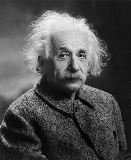Photoelectric effect

The photoelectric effect is the emission of an electron from a material caused by electromagnetic radiation (light). The electron is dislodged only when the light exceeds a certain frequency, regardless of the light's intensity or duration of exposure.
History
In 1839, the French physicist Alexandre Edmond Becquerel (1820 – 1891) discovered the photovoltaic effect. In 1887, the German physicist Heinrich Rudolf Hertz (1857 – 1894) observed the photoelectric effect, while experimenting with electromagnetic waves. In 1897, the English physicist Joseph John Thomson (1856 – 1940) deduced that the emitted particles were electrons.
The observation that the energy of individual emitted electrons was independent of the light intensity seemed to contradict the wave theory of light by the Scottish mathematician and physicist James Clerk Maxwell (1831 – 1879), who predicted that the electron energy would be proportional to the radiation intensity.
In 1900, the German physicist Max Karl Ernst Ludwig Planck (1858 – 1947) suggested that the energy carried by electromagnetic waves could only be released in packets of energy. In 1905, the German physicist Albert Einstein (1879 – 1955) explained the experimental data from the photoelectric effect by advancing the hypothesis that light energy is carried in discrete quantized packets and that the energy (E) of each quantum was equal to the frequency of light multiplied by a constant, later to be known as Planck's constant:
E = h ν
